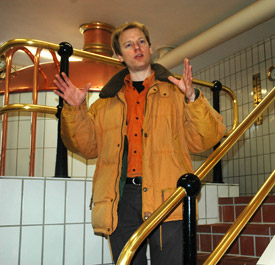The cover story of February’s Inc. magazine tells us “Small is the New Big,” a phrase that’s been batted around for the last year, meaning small can be part of a successful business model.
Given the recent success of small-batch breweries versus larger mainstream brewers it would seem that idea extends to beer.
Sure enough, the Inc. article is adapted from the book Small Giants, and one of 14 businesses featured in the book is Anchor Brewing. In the sidebar, author Bo Burlingham writes:
With another capacity crisis looming in the early 1990s, (founder Fritz) Maytag made plans to raise capital for expansion by taking the company public, but he pulled back at the last moment. “I realized we were doing the IPO out of desperation – because we thought we had to grow,” Maytag recalls.
“It occurred to me that you could have a small prestigious, profitable business, and it would be all right. Like a restaurant. Just because it’s the best around doesn’t mean you have to franchise or even expand. You can stay as you are and have a business that’s profitable and rewarding and a source of great pride. So we made a decision not to grow. This was not going to be a giant company – not on my watch.”
As a bit of background, here’s more about Small is the new big.
When it comes to beer there are practical reasons to wonder about small and big. Fred Eckhardt wrote a wonderful column for All About Beer magazine about 10 years ago where he asked “What is craft beer?”
Among the answers was one from author-brewpub pioneer Greg Noonan of Vermont Pub & Brewery:
“Craft brewed (should) mean pure, natural beer brewed in a nonautomated brewery of less than 50-barrel brew length, using traditional methods and premium, whole, natural ingredients, and no flavor- lessening adjuncts or extracts, additives or preservatives.”
Is that true today?
 Matthais Trum (pictured here giving a tour of the brewery) points out that the lager contains none of the smoked malt that
Matthais Trum (pictured here giving a tour of the brewery) points out that the lager contains none of the smoked malt that